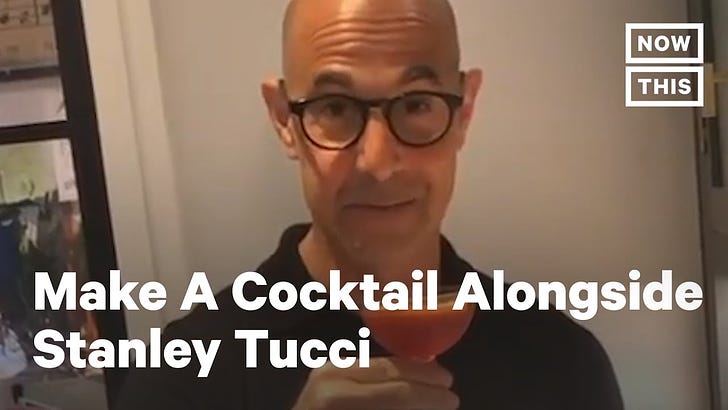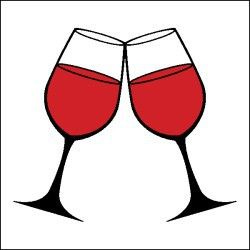Find more newsletters with recipes here. And my piece on the future effect of the crashing British hospitality business in The Globalist.
One day, well into retirement, my father strolled into his local health clinic. One of the town’s entertainment centres for Twirlies (“Is it too early to use my bus pass?”), he had been summoned for his National Health Service checkup. (Free, US readers.)
The doctor flourished a clipboard and apologised for being required to run through a list of newly legislated questions. “Alcohol, Mr Watson. How many units a week do you take?” “What’s a unit?” my father asked. Said the doctor, “Why don’t you tell me what you drink and I’ll tell you how many units it comes to.”
My father, a happy survivor of the media lunch generation, launched into his daily regime. He cited the gin-and-tonic he had before lunch, the shared bottle of wine he had with lunch, and the repeat of this exercise in the evening - increased, if friends had come to supper, to second gins-and-tonics and bottles of wine, and possibly an after-dinner snifter of the brandy he’d brought back from a day trip to France.
“Mr Watson, you have exceeded your week’s supply of units and it’s only Monday. You need to cut down on your drinking.” “Why?” said my father. “Because it will kill you,” responded the doctor. “Doctor,” said my father, “I am older than Methuselah. I don’t see your point.”
Moving to the US, I was thrilled by the anticipation of cocktails. After all, I’d grown up on movies where everyone smoked and spent their time, when not emoting to camera, sipping exotic concoctions with glamorous names from gorgeous glasses.
By the time I turned up, America’s amber waves of grain were being directed towards the creation of ethanol, not alcohol. Spritzers were the order of the day, white wine split with equal, steadying, amounts of fizzy water.
Booze was to be tamed. A century before, Coca Cola had dropped the small quantity of cocaine it took its name from that had encouraged its 1885 inventor, John Pemberton, to advertise his drink as, “A brain tonic and intellectual beverage.”
The US of the 1990s was a society where ordering a vodka-on-the-rocks at the bar provoked raised eyebrows from every other drinker clutching their Chardonnay. Spirits were in bottles that, if stocked at home, were no longer displayed on mirrored cocktail trolleys but hidden away in cabinets.
During Covid19 lockdown, actor Stanley Tucci did his best to rehabilitate the cocktail with a buff-armed performance demonstrating the construction of a Negroni.
(This is the unedited version as opposed to Good Morning America’s very advertiser-aware one.)
His prowess with the Martini was also revealed. Jump to minute 1:05 to watch him concoct one with equal panache.
Nevertheless, wine is still the more socially acceptable tipple. A glass of it may appear less decadent but American wine packs a punch. It’s higher in alcohol than other nations’ wines. The average alcohol content by volume or ABV (‘Proof’ isn’t used in wine labelling) of medium-bodied red wine from elsewhere in the world is between 11% and 13.5%. The most popular US varietals, Chardonnay, Pinot Noir, Cabernet Sauvignon, Merlot, and Zinfandel, swallow down at 13.5% to 15% ABV.
I’m not promoting a return to the drinking practices of my father’s generation. But if you’re gritting your teeth to give up wine for Lent, which begins today, 17th February, here is an aspect of the liquid grape that might help you in your resolve: the calories it contains.
The difference in calories between European and American wine over an evening’s socialising is significant. A standard pour is officially 175ml, or just over 6 fluid ounces. A glass of 12% ABV European wine is emptied at 147 liquid calories. A 14%ABV US glass at 175.
It is disputed whether white wine contains fewer calories than red. Most wine professionals reckon they are equal. So while white wine might be favoured for the maintenance of gleaming tooth enamel, it may not cost less in calories than red.
In the 1960s, California wineries started promoting their Chardonnay, Sauvignon Blanc, and Chenin Blanc. These took off among baby boomers because their slightly sweet natural characteristics were emphasised to make them palatable to a generation raised on canned sodas.
Since then, the US has become the world’s largest consumer of wine, and its fourth largest producer. In 1976, to the horror of the French, American wines beat French wines at a blind tasting in Paris known as ‘The Judgement of Paris’. Plus they were cheaper.
In 1991, wine got an unexpected boost from a 60 Minutes programme.
Whether it was instrumental in changing American attitudes to wine, wine consumption doubled.
Lent is a penitential period. But we’ve been caught in a sorrowful interval for over a year now. Reasonable tippling brings pleasure. Give up eating candy. It’s got even more calories.
Here’s my father’s recipe involving a splash of alcohol in a pudding he served to dazzling effect. It’s manageable by anyone who likes to boast they can’t cook.
1 passion fruit per person
1-2 teaspoons sugar per passion fruit
1 teaspoon dry sherry per passion fruit
150ml/1/4 pint/5 fluid ounces double/heavy cream
Halve the passion fruits and scrape them seeds and all into a bowl. Add the sugar and sherry and stir till the sugar has mostly dissolved. Pour in the cream and whisk the mix together, by hand or with an electric beater (just don’t discard the fruit strands on the whisks) till it begins to thicken enough that a spoonful of it flops back into the mix. Pour into champagne flutes or wine glasses. And cheer.




